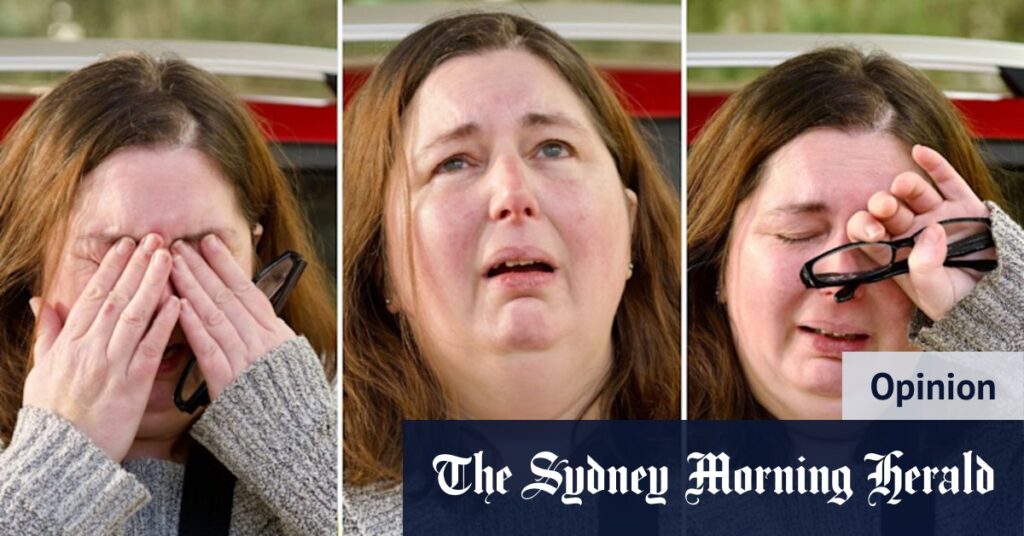From a criminology perspective, Erin Patterson is certainly an interesting study.
I remember vividly the first interview she did at the very start of the case. Don and Gail Patterson, as well as Heather Wilkinson, had died while Ian Wilkinson was still in hospital, fighting for his life. Erin Patterson stood beside her car at her home, in front of the press, wiping imaginary tears from her eyes.
From left: Don Patterson, Gail Patterson, Heather Wilkinson and Ian Wilkinson.
As a criminologist, I’ve seen crocodile tears many times before, and I saw them that day. It was clear to me at that moment that she felt no real sympathy for what her family members were going through.
That was borne out when she did additional interviews in the following days, in which she expressed distress not for Don, Gail, Heather or Ian, but for herself. For how her life had been impacted, how she couldn’t leave home. Me. Me. Me.
Then came the lies. One of which I found particularly interesting was her claim of suffering from bulimia.
A lot of people suffer from eating disorders, and many can and do successfully keep this a secret from family and friends. In fact, dishonesty about symptoms is not the exception for sufferers, but the rule; the lies are a symptom of the disorder.
But lies for Patterson appear to be more a symptom of her personality, as opposed to a genuine eating disorder. Patterson also lied to Don, Gail, Ian and Heather about having cancer – this lie was the premise for the fateful lunch. For that reason, and when combined with other lies that were unearthed during the trial, her claims of bulimia felt more like a convenient narrative to explain why she did not also succumb to the effects of the death cap mushroom toxin rather than a genuine condition she had battled in silence and in secret for decades.
Regardless of what any expert report shows, Patterson is going to prison for a very, very long time. I don’t have a crystal ball, but given the seriousness of the case, I am sure she will be looking at a life sentence, probably multiple terms to run consecutively.
The real question then will be over parole – will she be given a chance to one day walk free, or will the judge consider her crimes so heinous that she will receive a full life tariff without the possibility of parole? That’s an incredibly rare outcome, and is saved for the worst of the worst.
Loading
Katherine Knight was the first woman in Australian criminal history to be sentenced to life without the possibility of parole, and she remains one of a handful of female prisoners who will never be released. After stabbing her husband, John Price, to death in 2000, Knight skinned him and cooked parts of his body, which she then intended to feed to his children (Knight was not their mother). Mercifully, that final step didn’t happen, but the nature of the offence means that she is still considered too dangerous to ever be set free.
In this case, the motive was given was revenge, as Price wanted to leave Knight. In Patterson’s case, we don’t yet have a clear understanding, so questions remain.
But one thing I am sure about is that this saga is not over. Aside from the books, the miniseries, the documentaries and podcasts that inevitably follow a case of this magnitude, the legal process has a few steps to go through yet.
Sentencing is likely to happen in August or September, and we are still waiting to learn if the defence plans to seek leave to appeal.
With each of these steps, the family will have to relive their trauma.
What I’ve learnt after years of working with families of murder victims is that they never achieve – or even speak of – attaining “closure”.
Monday’s outcome may bring some finality for the Patterson and Wilkinson families, at least for now, to allow them to begin to move forward with whatever life looks like. But their lives will never be the same. Especially when the person responsible for their suffering is one of their own; someone they cared for, someone who pretended to care for them.
Dr Xanthe Mallett is an associate professor of criminology at CQUniversity, and the co-director of the Queensland Centre for Domestic and Family Violence Research.
Read the full article here


